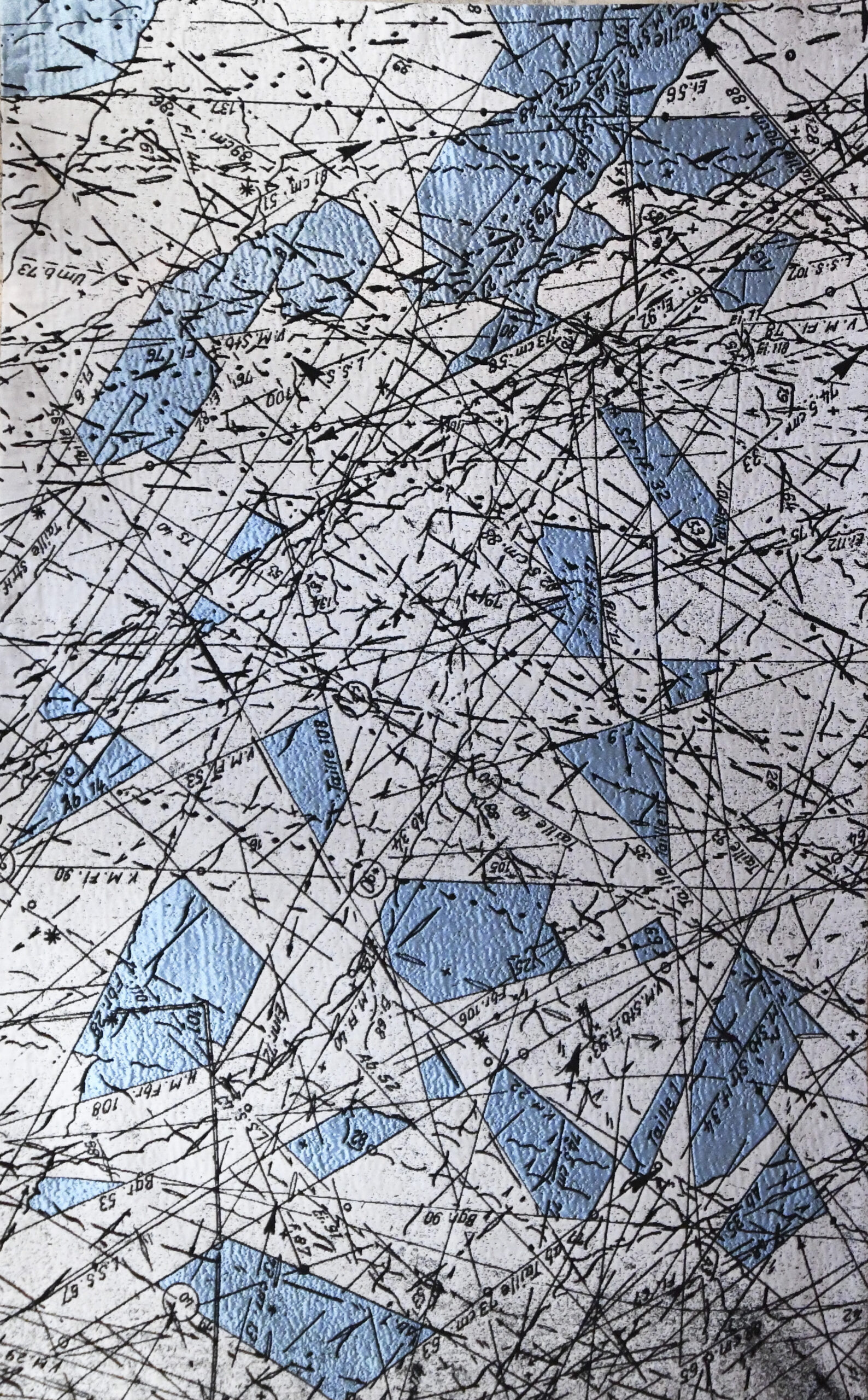From April 6th to May 4th, 2023, BUILDINGBOX presents the artwork POLAR SILK ROAD (MAP 1) by the artist Elena Mazzi (Reggio Emilia, 1984).
Since life first appeared on Earth, bodies of water have conditioned plant and animal life. As trade developed and grew, they gained more symbolic and strategic significance, and increasingly complex meanings, no longer just a question of subsistence but also a geopolitical matter. Elena Mazzi is interested in the most recent political and economic developments triggered by climate change, and this work investigates the new trade routes crossing the Poles, specifically the so-called Polar Silk Road. This route through the Arctic has become an option with the melting of the icecaps, and it would link Europe, Russia and China, representing a more northerly alternative to the traditional maritime routes, and enabling extraction activities in the Arctic area, which holds 20% of the planet’s resources, including oil, gas, uranium, gold, platinum and zinc.
The project POLAR SILK ROAD (MAP 1) analyzes the complex intertwining of economics, geopolitics, ecology and mobility regarding the areas of the Arctic that would be most affected by the infrastructural and political changes wrought by the Polar Silk Road. Since 2021, the artist has been making mixed-media collages based on ancient maps, to depict the new geopolitical and economic spaces in the Arctic regions.
For Equorea (of seas, ice, clouds and other waters) in BUILDINGBOX, Elena Mazzi is presenting a new tapestry. She started working with this technique in 2019, on the first piece in this series, entitled Snow Dragon. The starting point is an ancient paper pattern that traces possible, overlapping movements, routes and trajectories, alternated with areas of moving water and ice, as characterizes the Arctic.
The exhibition is the fourth appointment of Equorea (of seas, ice, clouds and other waters), a project curated by Giulia Bortoluzzi, which involves, from January 7h, 2023 to January 9th, 2024, twelve Italian contemporary artists invited to explore the topic of water in twelve monthly solo shows, scheduled in a sequence that follows the lunar calendar.
The title references Eugenio Montale’s poem Falsetto (1923), published in the collection Ossi di Seppia (1925). The poem revolves around a girl called Esterina, described as an ocean creature (“equorea creatura”), and frames the sea as a metaphor for life and the wonder of living without worrying about the future: “The power that tempers you is water, in water you find and renew yourself.” Montale’s work picks up on the way we habitually associate water with life, a notion echoed by Mircea Eliade in A History of Religious Ideas (1949), which describes it as the total of all “virtualities”, the matrix for all potential life, the foundation of the whole world. Water is at the origin of all cosmic manifestation, symbolizing the primordial substance from which all forms arise, and to which they return, by regression or cataclysm. Water lies at the beginning and end of every historical or cosmic cycle. It will always exist, and never be alone, because it is germinative, encompassing the virtualities of all forms in its own undivided unity. In cosmogony, mythology, ritual, and iconography, water performs the same function: it precedes all forms and sustains all of creation. A symbol of life, it gives universal becoming a cyclical structure.
Following the cyclical pattern of the astronomical tides (which occur when the Moon, Earth and Sun are in alignment), at each full moon in the year 2023, BUILDINGBOX will play host to the work of twelve Italian contemporary artists, who have been asked to explore the theme of water: Ludovico Bomben (Pordenone, 1982), Jaya Cozzani (Mumbai/Kanchipuram, 1982), Barbara De Ponti (Milano, 1975), Gaspare (Terlizzi, 1983), Michele Guido (Aradeo, 1976), Silvia Mariotti (Fano, 1980), Fabio Marullo (Catania, 1973), Elena Mazzi (Reggio Emilia, 1984), Ignazio Mortellaro (Palermo, 1978), Fabio Roncato (Rimini, 1982), Michele Spanghero (Gorizia, 1979), Virginia Zanetti (Fiesole, 1981).
The works presented in Equorea (of seas, ice, clouds and other waters) are site-specific (some are being exhibited for the first time, others are reworkings of previous pieces) and conceive of water as an emblem of all natural elements, and more generally as a form of life and creative potential. As a topic, water not only intrigues and inspires, but also elicits specific reflections on the future of our planet. Indeed, the life of all organisms on Earth depends on the presence of water and is shaped by its mutations: when it deteriorates, life becomes unsustainable.
There is as yet no proven scientific explanation of the origin of water on our planet. Whether generated by comets or meteorites crashing to earth, or volcanic eruptions in distant millennia, in the collective imagination it is associated with the mythological moment of creation, which contains the potential existence of all forms of life.
